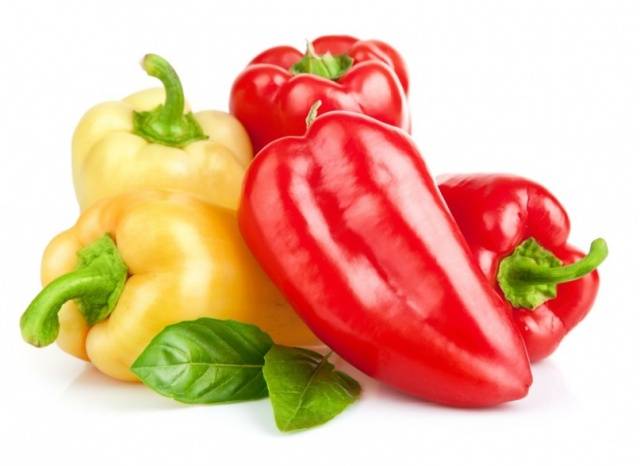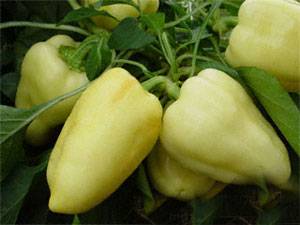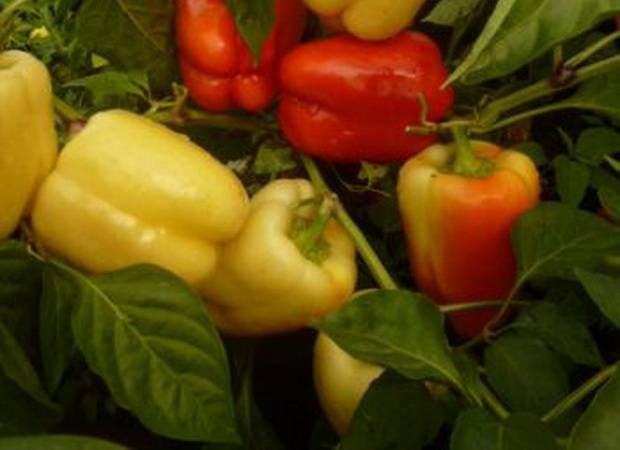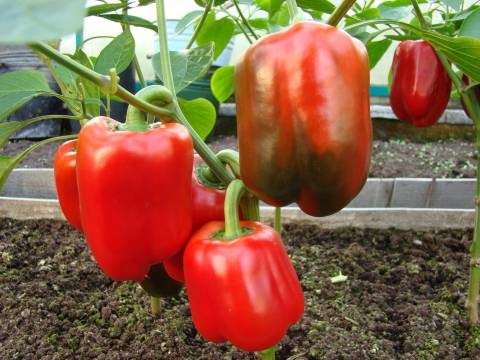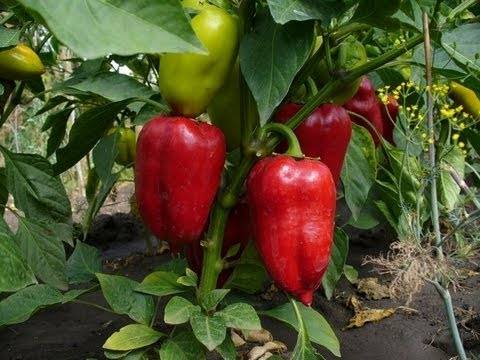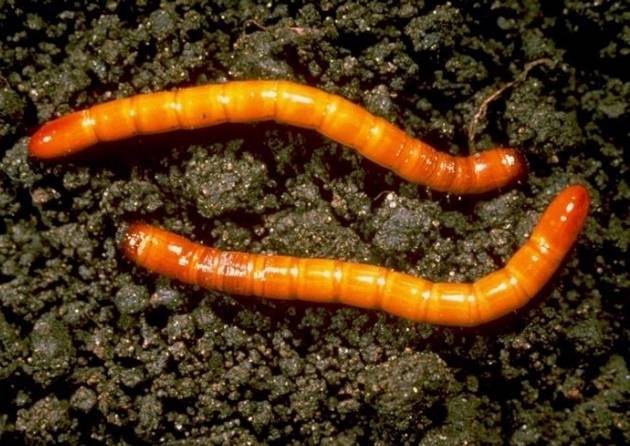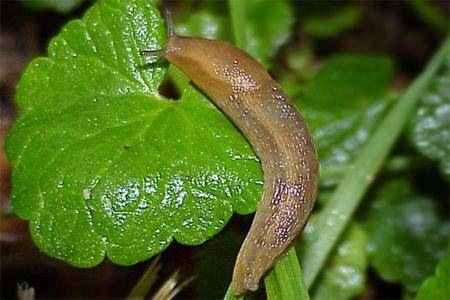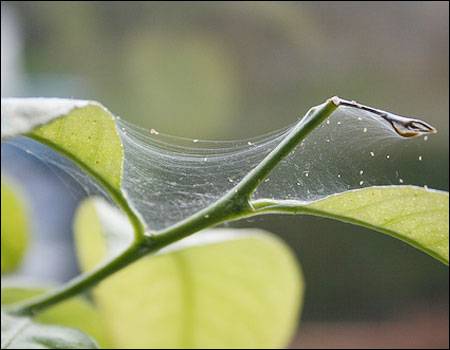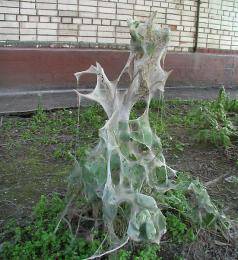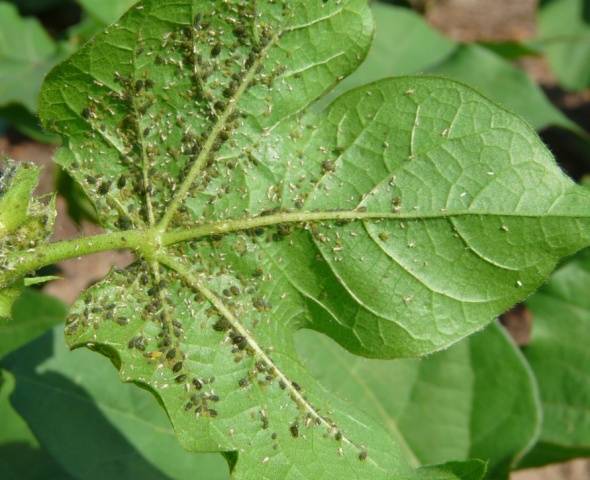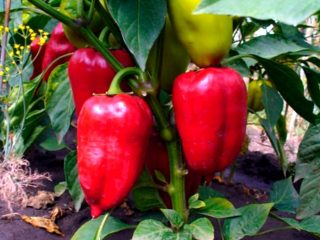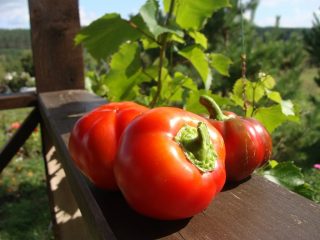Finding high-yielding peppers for a new garden season is no easy feat. What to choose, a time-tested variety or a newly introduced hybrid widely advertised by agricultural firms? There is no information about new varieties yet, but there are people who like to experiment and try something new. They will buy new varieties of pepper... The more cautious will prefer varieties that have already been tested by time. The varietal pepper seeds produced for several years have one definite advantage: information and reviews about them can be found. Information about new varieties of pepper has not yet accumulated, except for branded advertising. A small list of such varieties is given below.
High-yielding sweet peppers
Swallow variety
A high-yielding pepper variety with a growing season of 4 months. Semi-stem bushes up to 60 cm high. Productivity up to 5 kg per sq. m.
Fruits are medium in size, conical. The weight can be up to 100 g, the pericarp is 7 mm thick. Ripe red peppers.
Pepper variety has a dense skin that helps to protect peppers during transportation, good keeping quality during long-term storage. The harvest of this pepper ripens together, it can be harvested at a time.
The Lastochka variety is suitable for fresh consumption, cooking and winter preparations.
The Lastochka variety enjoys special love for its high adaptability to Russian natural whims.
Belozerka variety
Time-tested fruitful variety of pepper mid-early ripening period. Some growers may indicate it as early maturing.
Description of breeders
Bushes are medium-sized, up to 70 cm. Densely leafy. Medium-sized cone-shaped peppers up to 10 cm long and 5 cm wide. Pepper weight up to 90 g, pericarp 6 mm. Ripe fruits are red, with excellent taste, juicy. Suitable for conservation. They can be kept fresh for a long time.
The Swallow pepper variety is intended for growing in open beds.
Gardeners' opinion
Summer residents confirm the ability of pepper to long-term storage and transportation. They note the resistance of the Belozerka variety to unfavorable weather conditions and high yield even in rainy or dry summers.
Due to the popularity of the variety, unscrupulous sellers under the guise of Belozerka can sell a re-grade.
Belozerka is grown for commercial purposes. Subject to agricultural technology and fertilization, it shows excellent yield.
Variety Fat Baron
Differs in good yield, up to 7 kg per sq. m. With a small height of the bush (usually 50 cm) it bears very large fruits weighing up to 300 g. The thickness of the pericarp of this pepper reaches 1 cm. Up to 9 peppers can grow on one bush. The advantage of the variety is the high content of vitamin C in the fruits.
The growing season of the variety is 95 days. It is planted in a permanent place in early June. To achieve the highest productivity, you should not thicken the planting and plant more than 5 bushes per m². The optimal number of pepper bushes per unit area: 3-4 plants.
Californian miracle variety
The pepper variety is systematically included in the list of the best in many ways, but it is better to buy it depending on the intended place of cultivation, since firms produce pepper seeds adapted to their region.
California miracle not a hybrid variety, which means that its seeds can be left for planting next year. This variety has a nuance: under the same name, fruits are not only red, but also yellow and orange. However, apart from the color, there are no other differences between them.
The pepper variety is mid-season and takes four months to harvest. Bushes up to 40 cm high, compact. The fruits are not very large, weighing from 80 to 130 g, cuboid. The thickness of the pericarp is 7 cm.
Characteristics due to which this variety constantly falls into the first lines of the list of the best varieties of peppers:
- high yield, up to 12 fruits per bush;
- excellent taste;
- increased content of ascorbic acid in fruits;
- resistance to cucumber mosaic.
The variety is universal, suitable for fresh consumption and conservation. Due to its unusual non-hybrid varieties of pepper properties: resistance to diseases of pepper, high yield and stress resistance, it is of interest for farms that grow peppers for sale.
Features of growing varieties
This is especially true for homegrown seeds that were left for sowing from the previous harvest.
Sowing seeds, growing seedlings and transplanting them take place according to the standard scheme. It is necessary to plant bushes of this variety at a distance of 40 cm from each other. The planting depth of a young plant is the same as in the seedling container.
High yielding, this variety requires more water than other peppers. Water it with warm water. If watering is done outdoors in the country, it is better to do it in the evening from a barrel, when the water there is heated by the sun.
This ability increases the value of the variety, but it is not worth testing it in practice.
Fertilize the California Miracle pepper three times during the growing season. The first time after half a month after planting the plants, the second during flowering and the third during the ripening of the fruit. Any fertilizer is suitable for the variety, including organic solution.
Variety Bogatyr
A variety that is easy to get confused in, as different companies describe it differently. Some agricultural firms have cone-shaped, medium-sized fruits of this variety: length 11 cm, weight up to 130 g. Bush is from 50 to 70 cm high.
Other firms describe medium-sized cuboid peppers and the height of the bush does not exceed 40 cm. Still others position the variety as large-fruited: fruits up to 180 g in weight and 18 cm long and cone-shaped.
There are more generalities in the descriptions of varieties from different manufacturers than discrepancies.
The pepper variety is mid-season, with stable fruiting even in adverse weather conditions. The pericarp is 7 mm thick. High taste of peppers. Ripe red fruit.
High yielding variety suitable for commercial indoor or outdoor cultivation. The purpose is universal: it is suitable for fresh consumption and preparations for the winter.
The variety is resistant to the most common diseases and daily temperature fluctuations.
When choosing a variety, it is best to buy seeds from a company that produces them for your region.
General agricultural techniques for this pepper are the same as for other varieties. For seedlings, it will be necessary to use phytolamps.
When planting peppers on the south side of the site, you need to take care of shelter from the midday sun.
Gardeners who have tried to grow this variety of pepper confirm that with proper agricultural technology and the introduction of all the necessary fertilizers, peppers grow large, tasty and juicy. At the same time, the yield of one bush is up to 2.5 kg.
In a greenhouse, the plant can ignore the description on the package and grow up to 0.9 m. Such a tall bush needs to be tied up, so you need to take care of props in advance. Better not to come in handy.
Almost any packet of pepper seeds reads "high yielding" and "disease resistant." But in order for reality to correspond to advertising, you need to follow the rules for growing sweet pepper and be able to save it from diseases. As a rule, branded varietal and hybrid peppers are resistant only to the most common diseases and are not at all resistant to pests, of which peppers also have a lot.
Agrotechnics for the cultivation of bell peppers
Site selection and preparation of the garden
A sunny and wind-protected area is chosen for the pepper bushes, making sure that last year Solanaceae do not grow in the same place, since they have common viral and fungal diseases.
Pepper loves soil light, breathable, but at the same time with good water-holding ability. To achieve such properties, rotted sawdust and rotten manure are added to the loam at the rate of 1 bucket per 1 sq. m. Plus peat in the amount of 2 buckets. If the soil is clay, then additionally pour on a bucket of immature sawdust and coarse sand.
But sawdust should not be completely rotted either, in this case they will lose the ability to drain the soil.
Peat, rotted manure and clay are introduced into the sandy soil, 2 buckets each, plus a bucket of sawdust.
In addition, 1 sq. m add a glass of ash, superphosphate and potassium sulfate 1 tbsp. and 1 tsp. urea. The resulting mixture is thoroughly dug to a depth of at least 25 cm and formed into ridges 0.3 m high and 1 m wide. The surface of the beds is leveled and spilled with a hot solution of fertilizer suitable for peppers. Fertilizers range from mullein to store-bought fertilizer for growing peppers.
Planting seedlings in open ground
When planting, it is better to follow the scheme indicated on the package, but if the pepper seeds were bought from the hands on the market "in a bag", then they can be planted according to the most common scheme 0.6x0.6 m. It is better to plant in the evening, so as not to expose the freshly planted pepper to stress in the form of midday sun rays.
If the bush requires a garter as it grows, it is better to take this into account immediately and right when planting seedlings, stick pegs for tying into the ground, since the roots, leaves and shoots of the pepper bushes are very fragile and it is better not to disturb them once again.
After planting, young plants are covered with foil on arcs to protect them from the night cold. The film is removed in mid-June after a high air temperature has been established. You can not take it off at all, sometimes airing the landing.
It should be noted that the first couple of weeks, while the root system takes root, the peppers grow slowly. At this time, it is necessary to carefully loosen the soil, providing the roots with air flow. It is better not to be zealous with watering, but also not to allow the soil to dry out.
Watering and feeding
Pepper bushes are watered once a week with warm water (25 ° C) from a watering can, spending 12 liters per sq. m. In case of hot weather, the frequency of watering should be doubled.
Pepper bushes are fed at least three times during the growing season: 14 days after planting in a permanent place, during the period of ovary formation and flowering, when the fruits ripen. If feeding is carried out more often, they are done with a break of 2 weeks. When giving fertilizers, the bushes are watered at the root.
The fertilizer itself can be different. From folk species like "sauerkraut" (a rare stench) or manure solution to special purchased specially for pepper.
If it is necessary to form a bush, pinch its top when the plant reaches a height of 25 cm.Of the stepchildren that appear, only the top 5 are left on the bush, the rest are removed. No more than 25 ovaries are left on the bush.
Do not neglect pinching in the event of a rainy summer. Excessive thickening of the foliage on the bushes with high humidity leads to fungal diseases of the pepper. At the same time, in dry summers it is better, on the contrary, to leave the lower shoots, since their foliage will protect the soil under the bushes from drying out.
From varietal peppers, you can get seeds for the next year. To do this, take a fully ripe fruit and carefully cut out the seed crop, which is dried for 4 days at a temperature of 25-30 ° C. Then the seeds are separated, collected in a paper bag and placed in a dry place. The shelf life of seeds is 5 years.
Pests
In addition to the notorious Colorado potato beetle, pepper has a lot of other enemies, from which selection and breeding of new varieties cannot save it.
Wireworm
Wireworm Is a beetle larva. It has a very tough outer integument, which is why it got its name, since it feels like a piece of orange-brown wire. It feeds on plant roots. He loves sweets, therefore it is especially dangerous for carrots and potatoes, but he also does not disdain the roots of pepper. It can be stored in the ground for up to 5 years.
As a measure to combat it, the soil is dug up in the fall. In the spring, two weeks before planting, a bait (a piece of carrot or potato) strung on a stick is buried in the ground to a depth of 6 cm. Every three days, the bait is taken out, examined and destroyed along with the wireworm.
You can lay out bundles of grass and hay in the aisles. The insects gathered in them are destroyed. They also use the option of burying a glass jar on the ground level, into which the bait is placed. The wireworm can't get out of the can.
There are chemical methods to combat this pest, but they are expensive. In addition, many are afraid that the plants will suck the poison out of the soil.
Whitefly
The signs of its appearance on pepper are no different from the signs of its appearance on other plants. In other words, touch a leaf on a bush, and from under it a flock of small white insects. Plus, insect excrement on the lower leaves.
To combat this moth, insecticidal preparations are used.
Slugs
By damaging the fruit, molluscs cause them to rot. To combat them, grooves are made around the pepper bushes, which are sprayed with a solution of lime, making sure that water does not get on the bushes themselves. In the heat, the soil is loosened to a depth of 5 cm and sprinkled with hot pepper or mustard powder. But it is easier and more effective to use special poisonous drugs that kill not only slugs, but also snails, which also do not mind eating the harvest.
Spider mite
Attacks plants in too dry air. As a preventive measure, you can spray pepper bushes, but this cannot be done if you are at the dacha on short visits. The insect is microscopic, therefore, usually its appearance in the early stages is noticed by the cobweb that braids the leaves and stems.
If you do not take action, the mite can braid the entire plant.
The tick feeds on plant sap and is able to destroy the entire bush. To combat it, insecticides are used according to the instructions.
Melon aphid
It feeds on aphids on the juice that it sucks from the leaves of pepper, causing the foliage to wilt. It also harms the pepper by the fact that the flowers dry up, and the already set fruits grow ugly.
Aphids have enough natural enemies to control their numbers. For prevention, you need to control the amount weeds on the site, aphids also settle on them. If the aphid has multiplied, and its natural enemies cannot cope with it, insecticides are used.
